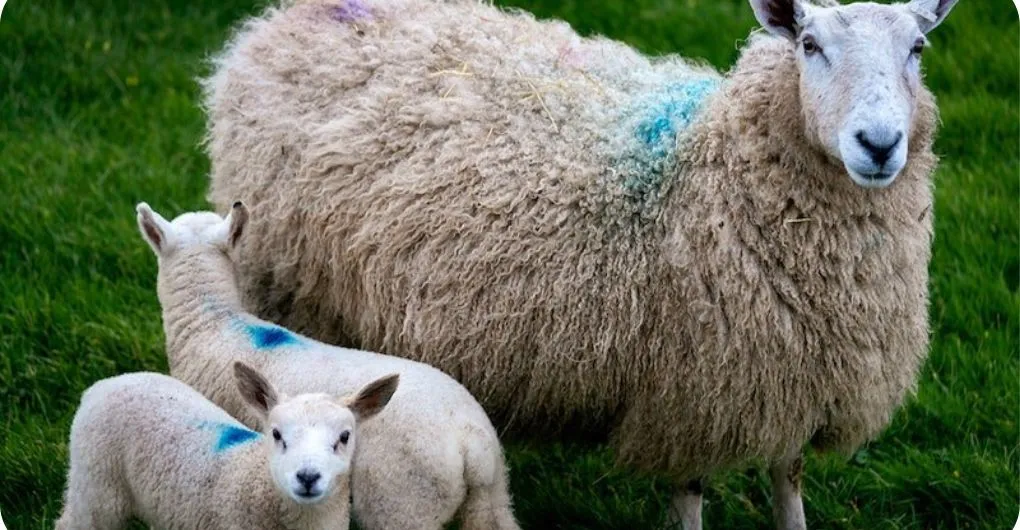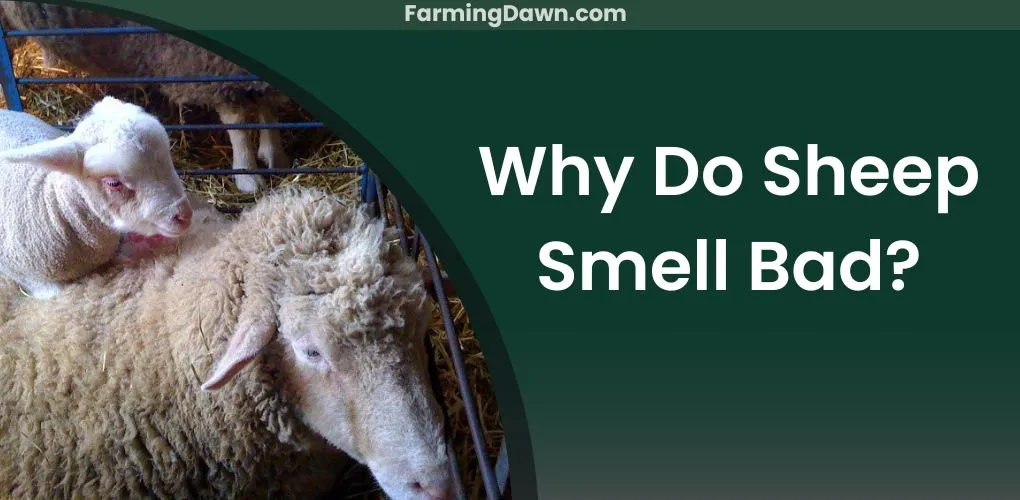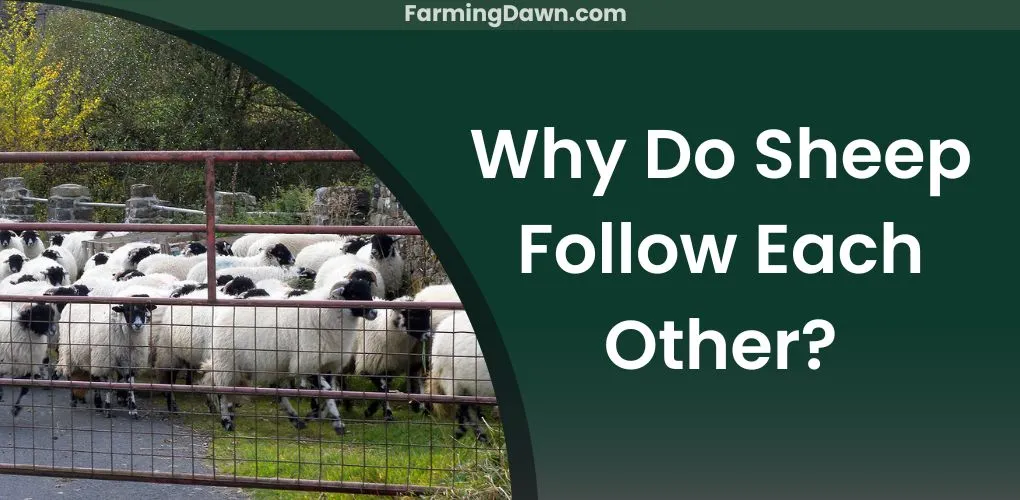As a farmer, you’re always looking for ways to maximize your land and resources. One way to do this is by raising Miniature Cheviot Sheep. These pint-sized sheep have all the same great qualities as their larger cousins, but take up less space and require less feed. Mini Cheviot Sheep are not only easily manageable, but they also make great pets or a source of fiber. This article will give the benefits of raising these little sheep and see if they’re the right fit for your farm.
Minia Cheviot Sheep Origin
Mini Cheviot Sheep have a fascinating origin story. The breed hails from the rugged hills of the Cheviot range, which straddles the border between England and Scotland. The Cheviot breed is one of the oldest in the UK and has been around for centuries. The first written records of the breed date back to the 14th century.
Miniature Cheviot is a descendant of the larger Cheviot breed, which was traditionally used for wool production. In the 19th century, breeders began to develop smaller versions of the Cheviot sheep for exhibition purposes. These sheep were first introduced to the United States in the early 1900s, and they quickly gained popularity due to their adorable appearance and gentle nature.
Cheviot Sheep Characteristics
Physical features
Mini Cheviots have a distinctive appearance, with a compact body, short legs, and a wide chest. Their wool is dense, fine, and crimped, which makes it highly prized for hand spinning and knitting.
One of the most notable physical features of the Cheviot Sheep is its distinctive white face and legs. This feature sets them apart from other sheep breeds and makes them easily recognizable. They also have small, erect ears and short tails.
Temperament and behavior
These sheep are known for their friendly and docile temperament, which makes them an ideal choice for small farms or homesteads. They are highly social animals and thrive in flocks, so it’s important to keep at least two together. They are also highly adaptable and can be raised in a variety of climates.
Unlike some other sheep breeds, Miniature Cheviots are not prone to aggression or wandering. They are generally easy to handle and are often used as companion animals. When in good mood, these sheep jump to show their affection and playfulness.
Cheviot Sheep Weight
As I explained before, Cheviots are a smaller breed of sheep. This means that they won’t reach the same weight as larger breeds like Suffolk or Texel. On average, adult Cheviot rams weigh between 140 and 180 pounds, while adult ewes weigh between 120 and 150 pounds. However, these are just averages, and individual sheep can vary in weight.
Cheviot Sheep Color
Typically, these miniature sheep have white or off-white color. This color is not only aesthetically pleasing but also serves a practical purpose in the sheep’s environment. The white or off-white color of Cheviot sheep allows them to blend in with their surroundings, making them less visible to predators. This is a survival adaptation that has helped Cheviot sheep thrive in their native habitat of the Cheviot Hills on the border of England and Scotland.

Black Cheviot Sheep
Black Cheviots are cheviots with a solid black base color. The black fleece of the Black Cheviot sheep is both visually attractive and useful. The wool from these sheep is warm, durable, and naturally water-resistant. Due to these characteristics it is an excellent choice for outdoor clothing, such as jackets, hats, and socks. The fleece is also commonly used for felting and spinning.

Is Cheviot Sheep the Smallest Sheep Breed?
The Cheviot sheep is certainly not the smallest sheep breed out there. In fact, several breeds are smaller than the Cheviot. One such breed is the Ouessant sheep, which hails from the island of the same name off the coast of France.
These little guys stand only about 19 inches tall at the shoulder and weigh around 50 pounds. That’s about half the size of your average Cheviot. Another breed is the Babydoll sheep, which stands about only 18-24 inches tall at the shoulder.
Now, that’s not to say that the Cheviot sheep is a giant by any means. They’re quite a manageable size, standing about 24-28 inches tall and weighing in at around 120-150 pounds, as I already discussed in the previous section.

Breeding and Care of Miniature Sheep
Breeding Techniques
One thing you need to consider when breeding Mini Cheviot sheep is the age and health of both the ewe and ram. You should make sure that the animals are healthy and free from any genetic diseases before breeding them. The best time to breed ewes is between 18 to 24 months old. Rams can start breeding as early as 6 months old but I will suggest you to wait until they are at least 12 months old.
Now, come to the breeding techniques for miniature sheep. One breeding technique that I have used on my farm is the controlled breeding method. This method involves separating the ram from the ewes for a period of time and then reintroducing him to the flock. Not only this technique allows for more controlled breeding, but also helps to ensure that the ewes are all bred at the same time, making it easier to manage lamb.
Diet and Nutrition Requirements
Cheviot sheep have relatively low nutritional requirements and can thrive on a diet of good-quality hay, pasture grasses, and water. It’s your duty as a farmer to provide them with enough protein, minerals, and vitamins to maintain their health and well-being.
Additionally, providing them with a salt block is essential to ensure that they get enough sodium in their diet. Providing a nutrient-rich diet is essential but avoid overfeeding your sheep, as this can lead to health problems such as obesity and lameness.
Housing and Shelter Needs
When it comes to housing and shelter, Mini Cheviots are relatively low maintenance. They can be kept in a variety of housing systems, including barns, sheds, and outdoor enclosures. Mostly, they prefer a dry and draft-free space that is large enough for them to move around comfortably.
You should also provide them complete access to clean water and hay at all times. And if you are keeping them outside, ensure that they have access to shade and shelter from the elements. Also wash them regularly to keep the smell off from these sheep.
Health Concerns and Common Illnesses
These sheep are generally hardy and resistant to many common sheep diseases. However, they can still be susceptible to health problems such as foot rot, internal parasites, and respiratory infections. To avoid health issues, keep their living space clean and dry to prevent the growth of harmful bacteria and parasites. Regular deworming and vaccination can also help to prevent the spread of disease.
Uses of Miniature Cheviot Sheep
Wool production
One of the primary uses of Miniature Cheviot Sheep is wool production. Their thick, soft, and durable fleece makes them perfect for producing high-quality wool. This wool can be used for various purposes such as making clothing, blankets, and rugs. Additionally, the wool is also prized by crafters and artisans for its natural colors, which range from white to dark grey. This makes it a great choice for natural dyeing projects.
Meat production
Cheviot Sheep are also ideal for meat production. Although they are smaller in size than other breeds, they produce tender and flavorful meat. The low fats in meat make it a healthy option for those who are health-conscious.
In Shows, Competitions and Exhibitions
Another use of the Mini Cheviot is in show competitions and exhibitions. These sheep have a distinctive appearance that sets them apart from other breeds. They have a small head, short legs, and a compact body, making them adorable and eye-catching. Many Cheviot sheep owners take them to different shows, fairs, exhibitions, and other events to show their docile nature and temperament.
Why Raise Cheviot Sheep?
Benefits to agriculture
One of the key benefits is their ability to graze on a wide variety of pastures, including rugged terrain and rocky hillsides. They can thrive on lower-quality forage and are excellent at converting forage into meat, making them an efficient choice for meat production.
Environmental benefits
From an environmental perspective, Cheviot Sheep have numerous benefits. For instance, they can help maintain a healthy ecosystem through their grazing habits. They can graze on different plants and help control weeds and invasive species.
Additionally, their manure is a natural fertilizer that can improve soil quality and promote healthy plant growth. Furthermore, their small size means they have a smaller ecological footprint than larger livestock, such as cattle.
Sustainability of Miniature Cheviot Sheep farming
As I mentioned before, Unlike some other livestock, these small breeds of sheep require minimal resources and can thrive in harsh environments, reducing the need for expensive inputs. Mini Cheviots are also resistant to many common sheep diseases, which means less reliance on antibiotics and other medications.
How Do You Identify a Cheviot sheep?
To identify a Cheviot sheep, you can look for its distinctive appearance. They have a wedge-shaped head, with a straight or slightly Roman nose, and a white, wool-free face. Their ears are medium-sized and stand erect, and their legs are sturdy and well-proportioned. They also have a dense, white wool fleece that is long-lasting and easy to work with.
Are Cheviot sheep small?
Cheviot sheep are considered to be medium-sized sheep, with ewes weighing around 150 pounds and rams weighing around 200 pounds. They are larger than some other breeds such as Shetland and Soay, but smaller than some of the larger breeds like Suffolk and Texel.
What are Cheviot sheep good for?
Cheviot sheep are a versatile breed and are known for their hardiness and adaptability. They can thrive in a variety of environments and are commonly used for both meat and wool production. They are also popular in the show ring for their striking appearance and distinctive features. If you want a detailed information, read above wool and meat production section.
What is Unique About the Cheviot breed?
One of the unique characteristics of Cheviot sheep is their distinct appearance. They have wedge-shaped heads with white wool-free faces, giving them a distinctive and attractive look. They are also known for their hardiness and resilience, having been bred in the harsh upland terrain of the Cheviot Hills in the border region between England and Scotland.
Final Verdict
To sum up, Cheviot sheep are a valuable addition to any agricultural operation. With their distinctive appearance and gentle disposition, they’re sure to be a crowd-pleaser on your farm. By raising them on pasture and rotating their grazing patterns, you can improve the health of your soil and reduce your carbon footprint. From their high-quality wool to their flavorful meat, they offer a range of benefits for farmers.





